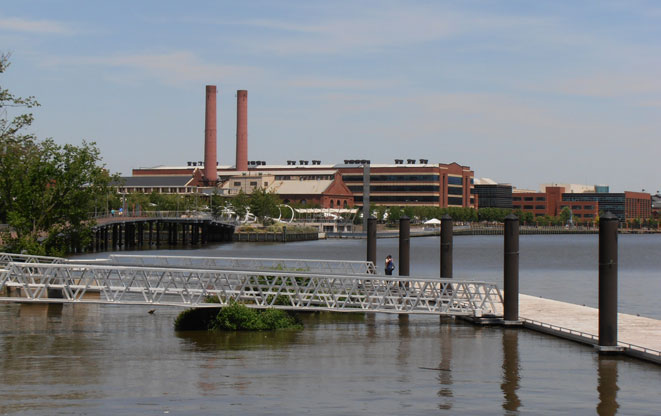
View to the Yards Park from Diamond Teague Park
The park is a gateway to DC’s southwest waterfront neighborhood, including Nationals Stadium, providing direct waterfront access for water taxis and private watercraft. Intensive riverfront reclamation efforts include shoreline plant habitat restoration and water pollution remediation. Piers and docks were sited to avoid disturbing the Environmental Protection Agency (EPA)’s toxic waste capping project on the Anacostia River bottom. Trash, a perennial problem, is collected by a floating boom that surrounds the docks and is carried away by barge.
Image: Joan Honeyman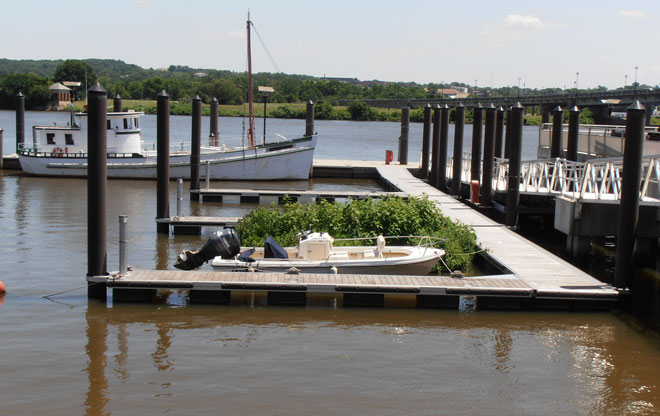
A Floating Wetland
The “environmental pier,” made from a hardwood, is designed to float with the tide. It provides direct access to the Anacostia River for small boats, canoes and kayaks. The floating wetland shown is one of seven created to improve water quality by reducing existing pollution. It took trial and error to devise a plant palette that the resident waterfowl wouldn’t eat; now the plants are thriving. This pier was carefully sited to avoid disturbing the E.P.A. river bottom toxic waste capping project.
Image: Joan Honeyman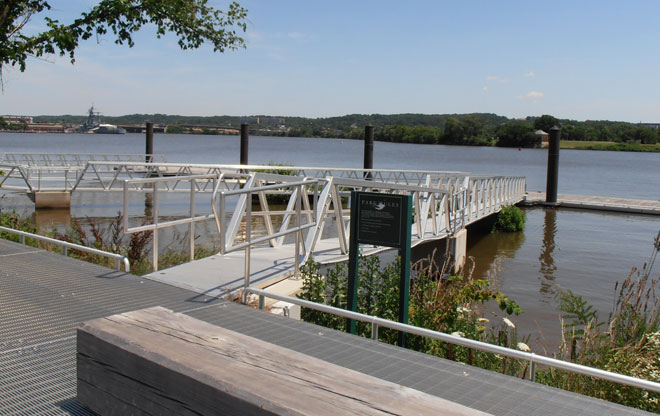
The Pier Rises and Falls with the Tides
A metal gangplank connects the more substantial concrete water taxi pier to the park. This is one of several metal gangplanks that lead passengers to SW waterfront neighborhood destinations. The pier is designed to rise and fall with the tides.
Image: Joan Honeyman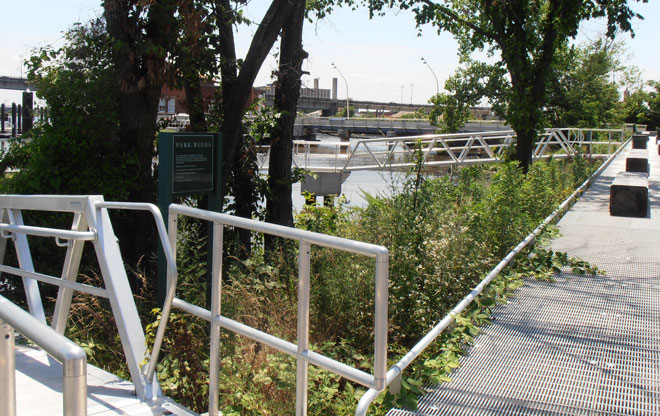
Using Plants to Restore the Riverbank
Riverbank restoration was an imperative in this project. Wolfgang Oehme designed the plant palette that ranges from coastal upland varieties to species adapted to high and low river tides. Both the environmental pier and the concrete pier were built without a bulkhead in order to preserve the native riverbank planting habitat.
Image: Joan Honeyman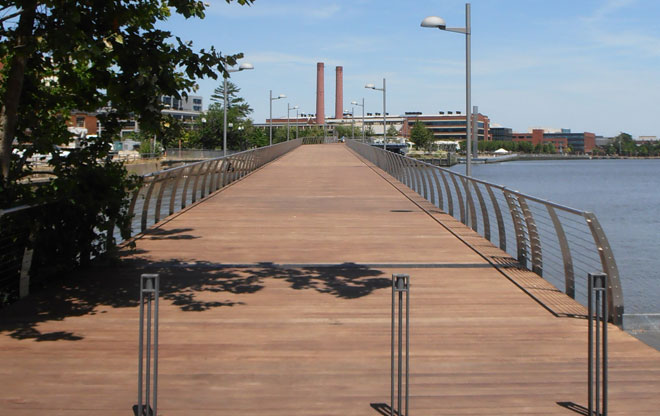
A Connecting Boardwalk
This is the Riverwalk Trail bridge looking towards Yards Park. The Riverwalk Trail connects Diamond Teague Park to the boardwalk at Yards Park and on through to the Navy Yard trail along the Anacostia riverfront. The new wood portion of the bridge hasn’t weathered yet; eventually both sides will look the same. The metal bridge bollards are elegant in their simplicity and their slim scale complements the adjacent cablerail guardrail.
Image: Joan Honeyman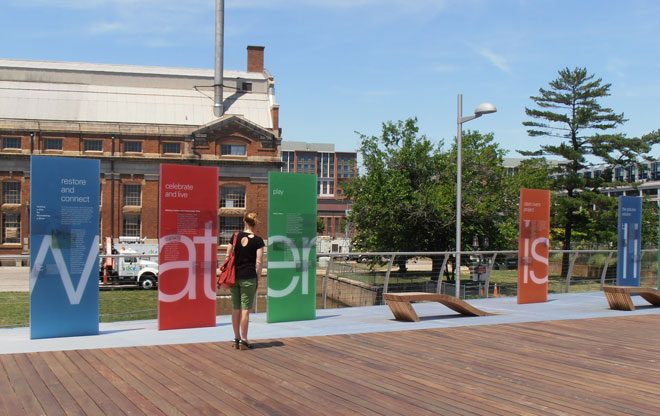
A Vivid Ribbon
The tropical hardwood in the center of the Riverwalk Trail bridge creates a vivid ribbon that weaves through Diamond Teague and Yards Park. Even though the two parks are very different in function and size, the sameness of materials makes them feel of a piece. Colorful banners celebrate sustainability and the river.
Image: Joan Honeyman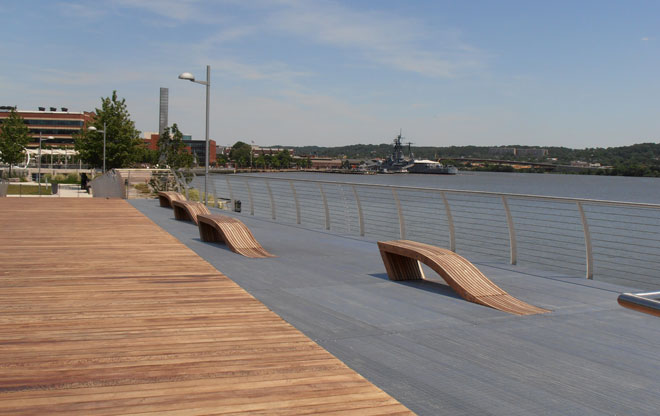
Repetition of Materials
Benches face the Anacostia River and complement the wood on the bridge. Again, repetition of materials.
Image: Joan Honeyman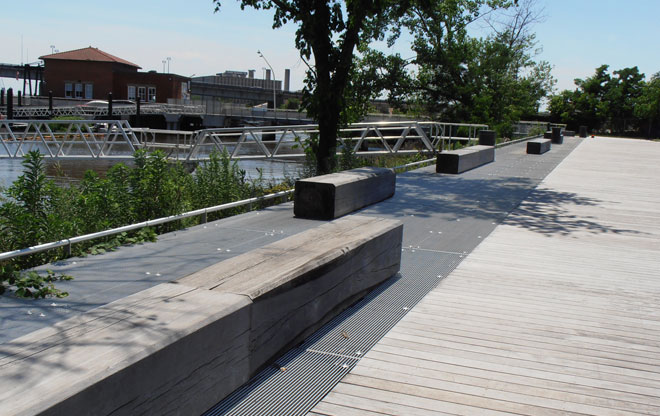
Sinker Log Benches
The boardwalk is 30-feet wide in Diamond Teague Park and is part of the Riverwalk Trail. It is divided into a 20-feet wide bikeway and 10-feet perforated metal pedestrian walkway. These simple benches were reclaimed from sinker logs dredged from the bottom of the Mississippi River. As tree logs were dragged up the river to the lumberyards, some of them would get tossed around and sink, hence the name sinker logs.
Image: Joan Honeyman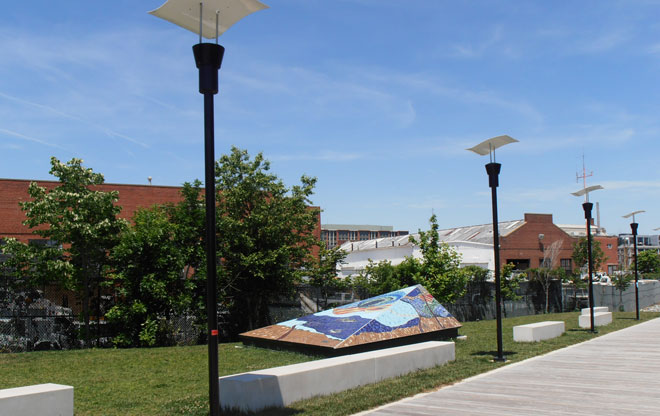
A Memorial to Diamond Teague
The LED pedestrian lights in Diamond Teague are reminiscent of sea gull wings. Long concrete benches complement the sinker logs found across the boardwalk. The mosaic sculpture adds a bright focal point to the Riverwalk Trail. Designed by local artist Byron Peck, it's a memorial to Diamond Teague and other deceased youth of the Environmental Conservation Corps. The memorial celebrates the life of the river and its relationship to the young people who are its stewards.
Image: Joan Honeyman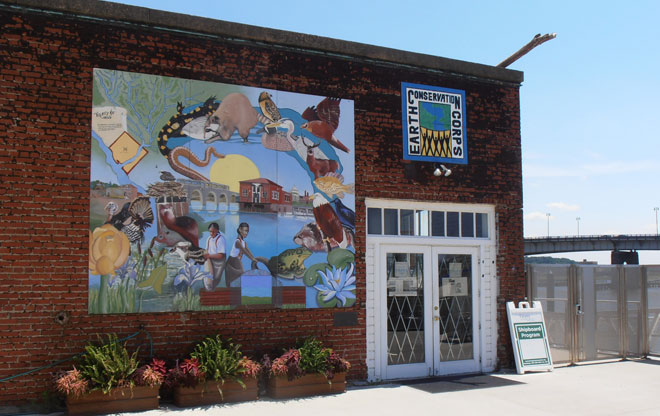
The Cycle of Life in the River
The Earth Conservation Corps is headquartered in the renovated Old Capitol Pump House built in 1903. It has become the centerpiece for shoreline site redevelopment; the ECC involves neighborhood at risk kids in responsible care and restoration of the river through environmental education and volunteer opportunities. The painting on the front of the building by Byron Peck and the ECC kids highlights the cycle of life in the river and how young people can take a role in its stewardship.
Image: Joan Honeyman